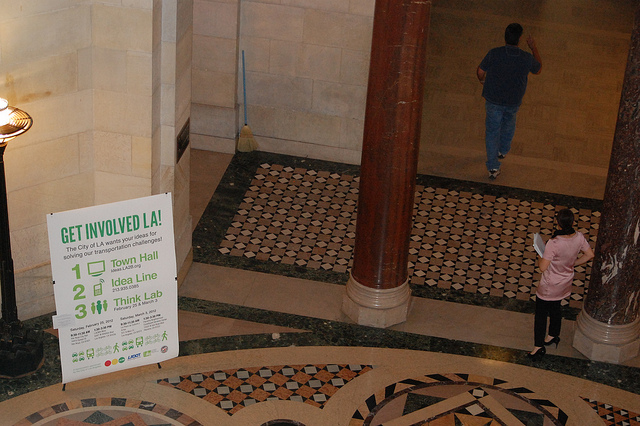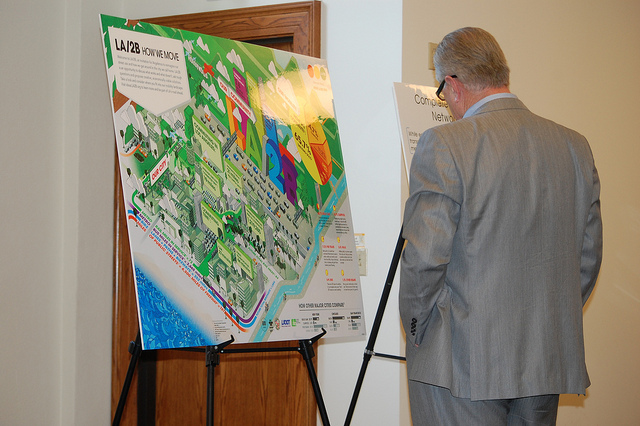This Saturday marks the first two of four of the introductory public meetings for the City of Los Angeles Mobility plan, set to be completed in 2014. Maybe they learned something from the disastrous early outreach meetings for the Bike Plan in 2008, because this time enthusiasm is higher for the plan.
Much of that enthusiasm can be traced to the Ideas LA/2B website designed to solicit real two-way communication between residents and the people working on the plan. The new mobility plan is a joint effort of City Planning and LADOT. The Ideas LA/2B website is filled with dozens of conversations taking place between users, most of which are debating the value of progressive transportation changes such as embracing cutting edge bicycle planning or a standard street design that is more "complete streets" than "surface highway."
But before city staff could take their message off the Internet and in front of the public, they had to stop by the City Council Transportation Committee. While the Plan's goal is to create a series of standards and projects to improve urban mobility, it was local concerns that dominated the discussion.
Jane Choi, one of the urban planners with City Planning, led the discussion. "Just as an outdated land use plan reflects outdated values, a new mobility plan needs to have a new vision for the city," Choi said at the start of her presentation. She repeatedly returned to the idea that this plan would create a "complete streets network” for Los Angeles by creating a series of street standards and streetscape manuals that would guide slow retrofit of the city.
Most excitingly, Choi said the plan would be based on new performance measures for L.A.'s streets, standards that decide whether a street is working based on the number of people, not cars, that are moved.
This weekend's meetings are meant to balance the initial public outreach. The Ideas LA/2B website has brought in a younger crowd than is usual in a typical mobility update. Over half of all respondents are under 40. Now, the four outreach meetings are designed to bring comments from a "traditional" crowd.
However, the outreach efforts weren't enough for some City Councilmen. After Councilman Bill Rosendahl asked for help promoting the LA/2B website through his social media outlet, Councilman Paul Koretz wondered whether or not there had been enough outreach to City Council staff. Koretz, for example, was unaware that the outreach was going on and used the plan as an example of poor public outreach.

Councilman Bernard Parks was also worried about the outreach for the project noting that there were no meetings scheduled south of Wilshire Boulevard. Given that large portions of South L.A. also have low rates of Internet access, the Councilman argues that South L.A. needs it's own hearing.
But the most resistance to the plan came from Councilman Tom LaBonge, who didn't want to see any changes to the streets in the 4th District until there was an agressive outreach plan. That the Movility Element won't be completed until 2014 was lost from the discussion.“I don’t want to change anything in the 4th District until we go private,” the Councilman offered. “I’m excited about new thinking, but I don’t want you to change anything in our district until we’ve looked at it from the big picture.”
From there, the Councilman returned to old themes, such as the need to preserve free flowing car traffic. “I want to preserve the grid system. 7th Street is fine, but I see what you’ve done to Spring Street. Down at first street there’s a choke point, and we should be looking to remove choke points.”
But so far, comment on the website is trending away from multi-lane roads with fast moving car traffic towards streets designed to accommodate all road users safely.
“We heard a lot of support for new ideas that haven’t been implemented in our city yet, but are popular in other cities," Chan added.
LA/2B will be holding outreach meetings on Saturday in Van Nuys and the Los Angeles County Museum of Art. Get the details for this weekend, and next weekend's meetings, here.







